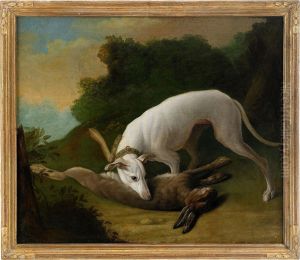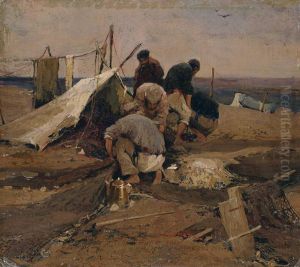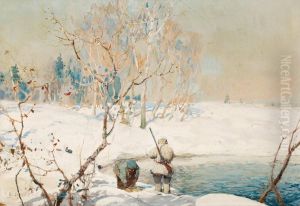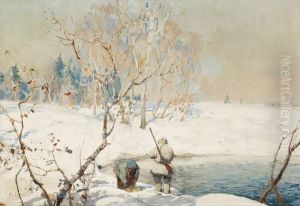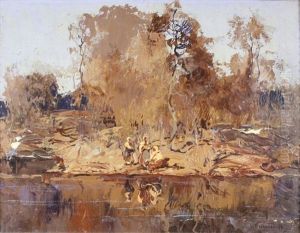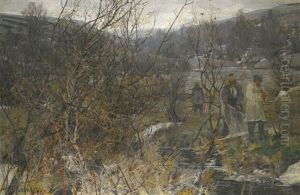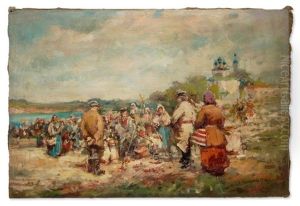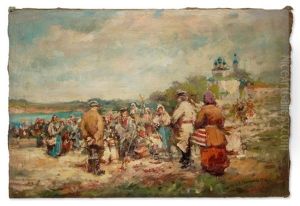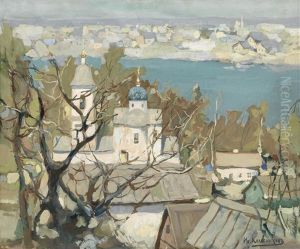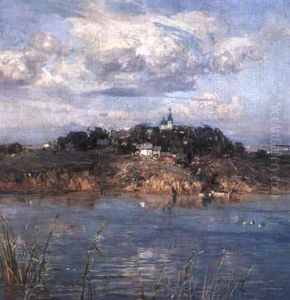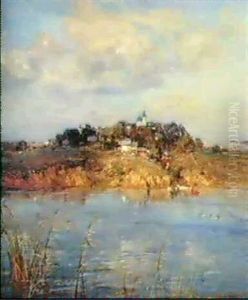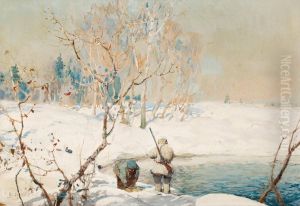Ivan Feodorovich Kolesnikov Paintings
Ivan Feodorovich Kolesnikov was a Russian painter born on August 5, 1879 in Astrakhan, Russia. He was part of the later period of the Russian realist tradition, and his work was influenced by his surroundings and Russian culture. Kolesnikov received his artistic education at the Moscow School of Painting, Sculpture and Architecture, where he studied from 1900 to 1905 under the tutelage of renowned artists such as Abram Arkhipov and Alexei Stepanov.
Kolesnikov was known for his genre paintings, landscapes, and portraits. His works often depicted the life and customs of the Cossacks, a group of people he was deeply interested in. He was particularly adept at capturing the nuances of natural light and the vivid colors of the Russian landscape. Kolesnikov's paintings are characterized by their expressive brushwork and atmospheric quality, which evoke the mood and spirit of the subjects he portrayed.
After his education, Kolesnikov lived and worked in various places, including St. Petersburg, where he became involved with other Russian artists and intellectuals of the time. He exhibited his work with the Peredvizhniki (Wanderers), a group of Russian realist artists who formed a cooperative in protest of academic restrictions. His involvement with the Peredvizhniki allowed him to further develop his style and gain recognition for his artistic contributions.
During his career, Kolesnikov also taught art, sharing his knowledge and techniques with younger generations of artists. His legacy includes not only his paintings but also his influence on the artists he mentored.
Ivan Feodorovich Kolesnikov's life and career were affected by the turbulent times in which he lived, including World War I, the Russian Revolution, and World War II. Despite these challenges, he continued to produce art that reflected the beauty and complexity of the world around him. Kolesnikov died on November 3, 1943, in Samara, a city to which he was evacuated during World War II. His works remain in various Russian museums and continue to be appreciated for their contribution to Russian art and culture.
